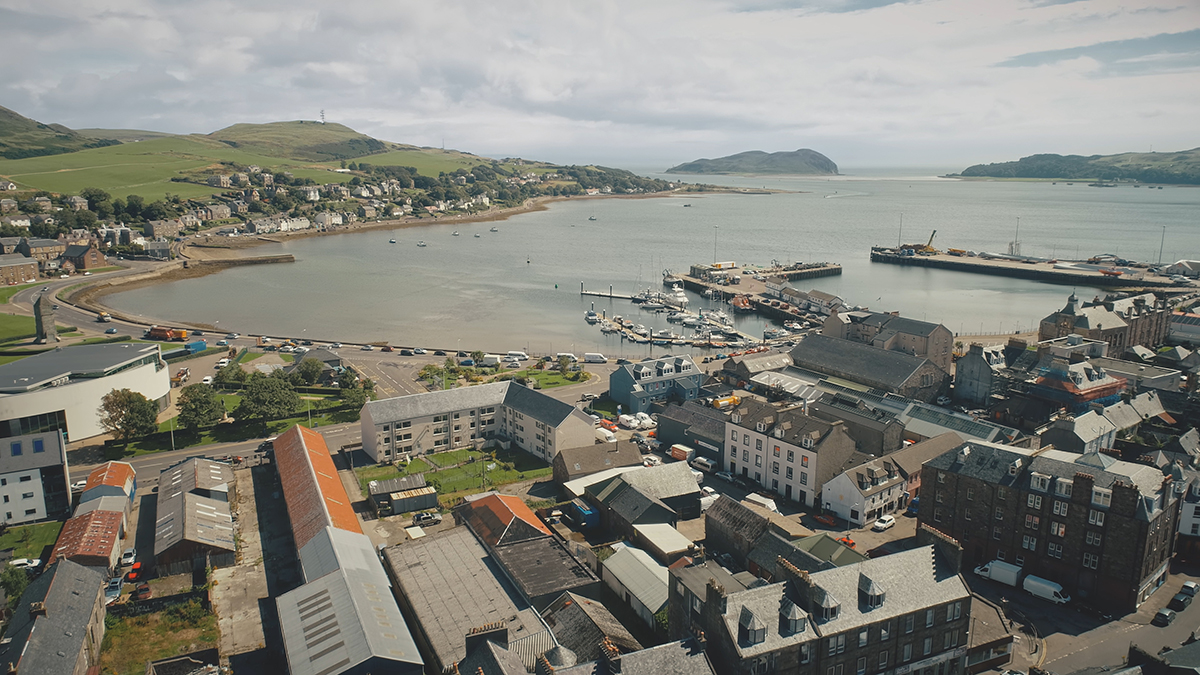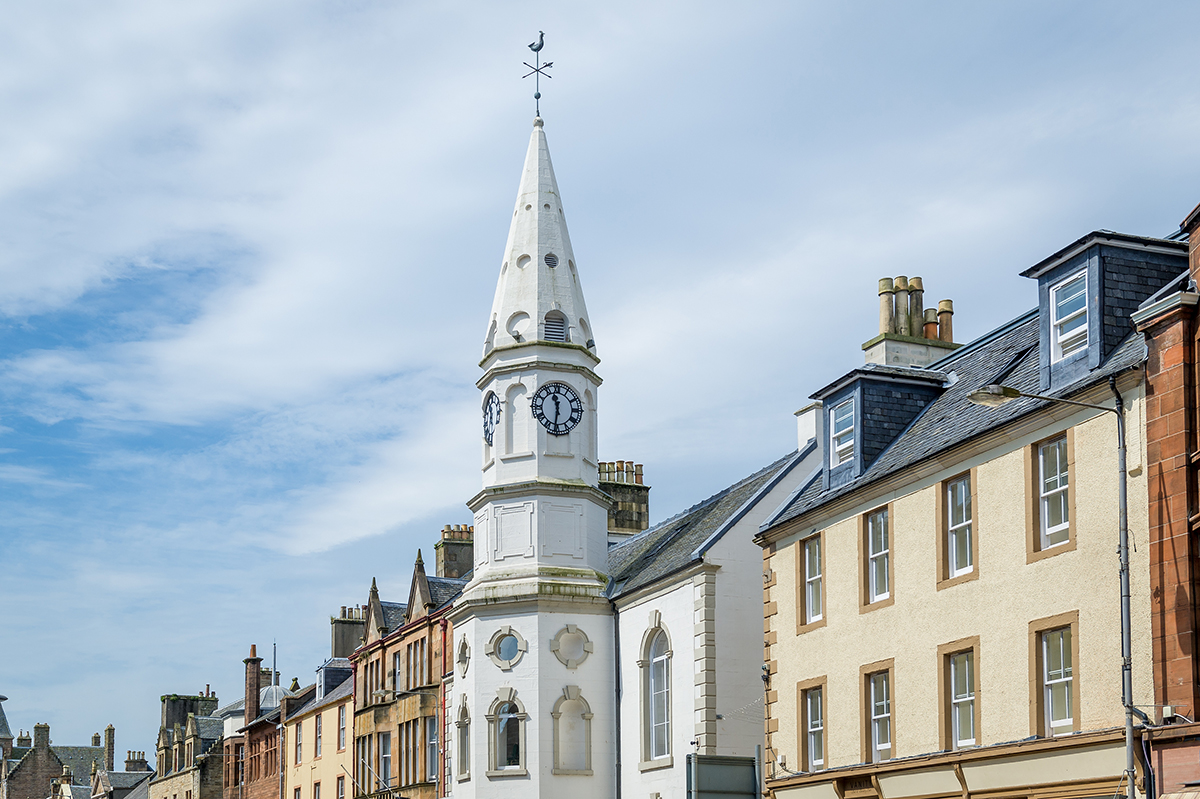Campbeltown Whisky: A Guide to Scotland’s Smallest Whisky Region
By Thijs KlaverstijnModern Campbeltown is a small harbor town with a modest amount of distilleries. However, visitors who know what they’re looking for will undoubtedly notice the scattered remnants of old distillery buildings, now used as bus garages and supermarkets.
In fact, the town is littered with whisky history. Given its former status as one of the premier whisky producing regions in the world, that’s not surprising at all. At one point in time, Campbeltown was home to over thirty whisky distilleries. Even at the end of the 19th century the Campbeltown distilling industry prospered—21 distilleries were in production in 1885, with all but one inside the town limits.
But less than forty years later, Campbeltown became a prime example of the fragility of the whisky industry. By the 1920s the big blending companies of Scotland had pretty much settled on their recipes. The heavy smoky/oily style that had come to define the region’s whisky was decidedly out. Export was way down too, due in part to Prohibition in the USA, as well as the Great Depression. The continuing nose-dive of domestic consumption—set in motion after World War I—all but signed Campbeltown’s fate.
From the 1930s onwards, only Springbank and Glen Scotia represented Campbeltown on the Scotch whisky stage. While the two distilleries closed during certain periods of time, both ultimately refused to go under. Now they are a testament to Campbeltown’s resilience. Together with the new Glengyle distillery, they not only keep the town’s whisky tradition alive, they’ve revitalized it.

Springbank
Entering Springbank Distillery is much like traveling 150 years back in time. Founded in 1828, it has been in the hands of the Mitchell family for over 180 years. Marked by the fickle nature of the whisky industry, continuity is now the watchword for Springbank. After a period of closure during the Scotch whisky crisis in the 1980s, the distillery decided to no longer sell to blenders, and instead began focusing solely on the production of single malt whisky.
Then in an unprecedented move, the brand re-opened its malting floors in 1992. Today Springbank is the only distillery in Scotland to fully malt its own barley. Roughly sixty people are employed by Springbank, which is an unusually large amount in recent times. Automation and computers have made it possible to operate Scotland’s largest distilleries with just a handful of employees.
With a maximum capacity of 750,000 liters per annum—though the brand usually produces less—it is one of the country’s smaller distilleries. Yet, Springbank is deservedly one of Scotland’s cult whiskies, producing whisky that takes you back to a different era.
Glen Scotia
Originally named Scotia, this Campbeltown distillery was built in 1832. Together with Springbank it is one of only two distilleries to have survived the onslaught of distillery closures in the tumultuous 1920s, although not without a few scratch marks. As an illustration, Glen Scotia is said to be haunted by former distillery owner Duncan MacCallum who died in 1930. Workers today still avoid certain areas after dark.
Glen Scotia never much made a name for itself as a single malt, instead often selling its whisky in bulk. The distillery’s course changed though, when it was bought by a private equity fund. Single malt whisky is now the main focus at Glen Scotia, and an entire new core range was launched just a few years ago.

Glengyle
The youngest of the three Campbeltown distilleries, Glengyle restarted production in 2004 after being closed for almost eighty years. The distillery is owned by J&A Mitchell & Co, the same company that also owns and operates Springbank. However, given that a different party owns the Glengyle trademark, the whisky made at Glengyle is named Kilkerran.
Notably, Glengyle is the distillery that saved Campbeltown’s status as an official whisky region. Around the start of the new millennium the Scotch Whisky Association (SWA) contemplated to absorb Campbeltown and make it part of the Highlands region, as it was seen as too insignificant to stand alone. Adding Glengyle upped the total of Campbeltown distilleries to three, the same number the Lowland region had at the time, essentially negating the SWA’s argument.
Cadenhead’s
Finally, there’s Cadenhead’s. While not a distillery, this independent bottler is as important a part of Campbeltown’s revival. Cadenhead’s has been around for 176 years, starting out as a vintner in Aberdeen. When the company was bought by J&A Mitchell & Co in the 1970s, it moved to Campbeltown and adopted the philosophy of its parent company.
Long-term stability is the name of the game. Cadenhead’s has grown exponentially in the last five years, but it is hardly selling as much whisky as it can, choosing to go slowly, rather than fast and furious. Nonetheless, Cadenhead’s opened shops all over the UK and the European mainland. It is one of the biggest independent bottlers of Scotch whisky in the world, sitting on a treasure trove of casks, waiting to be bottled in the future.
A bright future
In a relatively short period of time, Campbeltown has gained a cult status among whisky enthusiasts. While it will likely never grow to the heights of centuries past, the town has at least partially reclaimed its heritage. Glen Scotia is stable and set up for the future, but most remarkable is the charitable trust that J&A Mitchell & Co has set up for Springbank, Glengyle and Cadenhead’s.
It leaves the people of Campbeltown in charge, ensuring the companies won’t be divided among different buyers when current chairman and owner Hedley Wright passes.The future of Campbeltown whisky is not only bright, it is safe.
With Distiller, you’ll always know what’s in the bottle before you spend a cent. Rate, Review and Discover spirits! Head on over to Distiller, or download the app for iOS and Android today!


